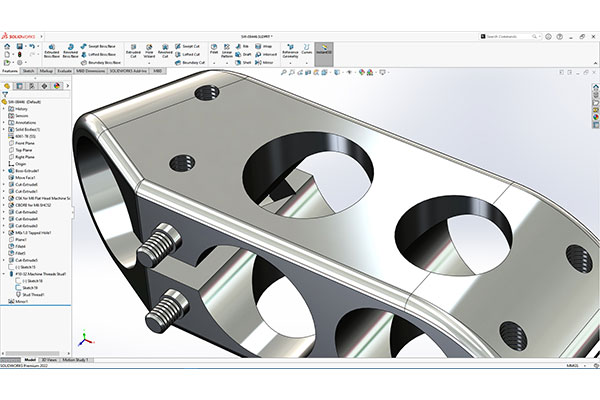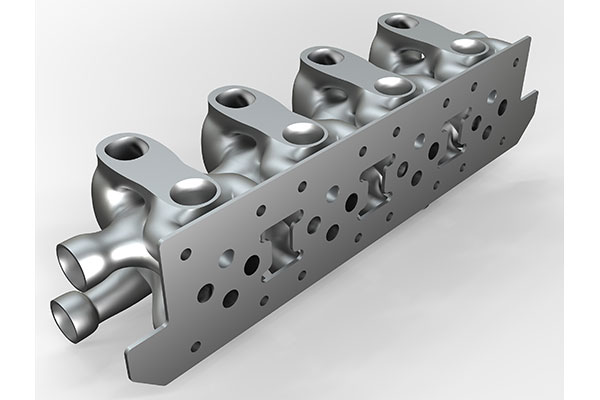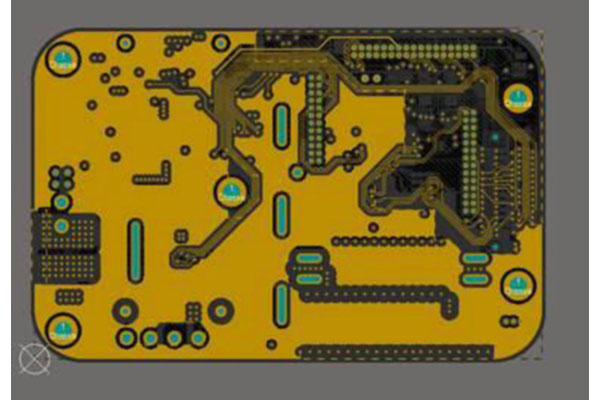Expediting Engineering Design via Software
As software-driven automation continually drives the industry forward, expect increased efficiencies and effectiveness.

Flex Operations uses software to conduct break-even analysis to decide whether a piece would be 3D printed, molded, casted or machined. Image courtesy of Flex.
Latest News
June 13, 2022
Preliminary tasks can often weigh down design engineers. Some tasks are mundane but laborious and detract from the nitty-gritty of the design process and finding the best designs and solutions in minimal time.
As engineering design tools and software solutions have evolved, automation eases many of the same tasks. Designers may run applications that meld well with a specific type of fabrication, and materials and subsequent calculations may be simultaneously computed in parallel to design decisions as they are made.
Which Manufacturing Method is Best?
In fact, numerous tools are used to help designers to automate tasks and, through that automation, these tools lead them to a specific manufacturing approach.
Colin Swearingen is a modeling and simulation industry process consultant with Dassault Systèmes. As he explains, Dassault expedites fabrication methods by simply indicating how a product will be made and then providing that option in the application interface.
“Dassault Systèmes offers designers a variety of ways to ensure they can seamlessly account for numerous manufacturing methods during the design process,” says Swearingen. “Our ‘Function Driven Generative Design’ application enables users to specify the desired manufacturing method to be generated as an output from an optimization.

Dassault Systèmes offers designers ways to ensure they can account for numerous manufacturing methods during the design process. Image courtesy of Dassault Systèmes.
“Whether it’s casting, milling [or] printing, users can easily specify appropriate parameters from a user-guided assistant, ensuring that the optimization result is manufacturable according to the method specified,” Swearingen says. “This approach prevents the user from having to perform any manual guesswork and/or trial and error to appropriately design for manufacturing.”
Israr Kabir is a senior manager for emerging technologies at ASME. He says engineers are always trying to match the best fabrication method with the design. Plus, they’re always trying to expedite the design so they may direct their overall focus on where their attention is most needed.
“Generally, manufacturing process selection is driven by many different factors, including, but not limited to, production volume, material costs and availability, mechanical performance characteristics, geometric precision, surface finish, manufacturing overhead, in-house or supplier sourced,” says Kabir. “Because of the complexity of the ‘question,’ engineers still commonly apply their technical knowledge and combine with internal product costing software tools to identify the best solution that meets objectives for performance, price and other relevant criteria.”
In regards to software-selected manufacturing processes, 3D printing and additive manufacturing (AM) are now emerging as common options.
“Software-driven automation to aid in process selection has been most prevalent in the additive manufacturing sphere,” he says. “As AM process capabilities have moved into industrial applications and serial production, process selection has become more critical. Benefits of AM as a production method must be clearly conveyed to drive industry adoption.”
For example, Kabir explains how cost comparison tools like COSMO allow engineers to compare traditional metal manufacturing processes against additive manufacturing to help engineers pick the best solution.
Kabir also says that in the last few years, on-demand manufacturing platforms—where you can get an instant quote, such as Xometry or Fast Radius—have emerged to allow the designer to quickly compare different processes and related costs, operating on a manufacturing-as-a-service business model.
Murad Kurwa is the vice president of AM engineering for Flex in Milpitas, CA. He says their design process leans on software to help them make better decisions and identify the pros and cons of different manufacturing methods. With various software features, they can cross-compare different manufacturing methods to make the best decision in rolling out a product or fabricated design.
“We use internally developed break-even analysis to decide between 3D printing versus molding, casting [and] machining,” says Kurwa. “We also use a digital tool to review initial product CAD to do design for manufacturability review and make changes to the design to improve part quality as it gets processed in manufacturing.”
When Software Does the Nitty-Gritty
Aside from determining the best fabrication method, engineering design software can perform many mundane tasks and perform all the time-consuming detail work that an engineer would otherwise need to perform.
“The electronics industry and particularly printed circuit board (PCB) production are quite different from mechanical design and manufacturing in that designers are not typically choosing the manufacturing process,” says Ted Pawela, chief ecosystem officer and head of cloud at Altium. “Generally, this has been decided by the fabricators of bare PCBs and assemblers of the complete board, based on design attributes.

“Within our industry, the transition from design to manufacturing has been very much a ‘throw-it-over-the-wall’ kind of approach,” Pawela adds. “We’re trying to change that by shifting from ‘Design for Manufacturing’ to ‘Design with Manufacturing’ within our products.”
Specifically, Pawela says the company has connected its design tools to MacroFab’s manufacturing network so that “as a designer works, they can get feedback from manufacturing, and they can work collaboratively to determine the best way to have a board made.”
Samuel Alex Sowell is a robotics and space systems engineer with CACI International in Houston. He explains how the software he uses does most detail work for him in PCB design and its application.
“Altium has an auto trace router that attempts to make all the electrical connections autonomously in a PCB,” says Sowell. “The auto trace router does not work very efficiently, so the engineer usually does the trace routing themselves.”
Sowell suggests that a recommendation or reference design embedded in the software is helpful to give engineers a head start to design for a specific use case. Often, the process of setting up automation takes more time than simply doing the task 10 times over. So, as he sees it, an efficient automation is only as efficient as getting it set up in the first place.
“Before embarking on designing an automation process, you have to consider how often the automation will actually be used,” Sowell adds.
“A common issue regarding design and engineering in general is the time lost focusing on non-value-added responsibilities such as data translation, managing local copies of multiple static versions of data, traversing between various UIs [user interfaces] and any other conversions required to complete a task,” says Swearingen.
“The time lost performing these tasks can often lead to various business consequences such as bottlenecking collaboration, slowing down decisions and losing opportunities,” Swearingen adds.
Designers are always looking for opportunities to streamline activities that create bottlenecks, according to Swearingen. “Whether the goal is increased efficiency, or even sustainability, users are able to focus on the most important tasks, rather than being bogged down by non-value-added activities,” he says.
“We use an internally developed tool called ‘Digital Design for Automation,’ which is essentially a design review tool to help assess how a product is fit for automation including any wastage [and] issues with yield impact,” says Kurwa. “Designers use robot process automation for running scripts and programs that can do various checks. They also use built-in functions within design tools to do performance check cycles at various gates before the design is released into production resulting in better quality.”
Design and the Road Ahead
Kabir emphasizes the strong combination of generative and iterative design with AM. Together, products and designs will be created faster, smarter and with less waste. Software automation and a prescribed AM method is more forgiving if the designer misses something. There’s more room for trial and error—which much of modern science and engineering relies on.
“Modern modeling and simulation (M&S) engineering design tools have significantly automated the ability to virtually test performance of products against design/material choices and quickly make changes and test different iterations before physically producing the component,” says Kabir. “As the capabilities of M&S tools improve, there is growing interest in the emerging area of digital twins to connect the entire product lifecycle by allowing engineers to design, manufacture, sustain, maintain [and] decommission products and systems virtually so that physical execution is optimized at each stage of the lifecycle. The data that’s generated at each stage of the lifecycle then can be used [to] drive continuous improvement efforts, basically the next evolution of lean manufacturing.”
Engineering design software—of all types—is continuously improving. It provides great features that enable the designer to focus on what’s important. It also helps them make decisions that all meld with the end-to-end product lifecycle.
As software continues to be revised, and fabrication also improves, we can expect design engineering to be more efficient and effective—now and into the future.
More Altium Coverage
More Dassault Systemes Coverage

More Flex Coverage
Subscribe to our FREE magazine, FREE email newsletters or both!
Latest News
About the Author
Jim Romeo is a freelance writer based in Chesapeake, VA. Send e-mail about this article to DE-Editors@digitaleng.news.
Follow DE






